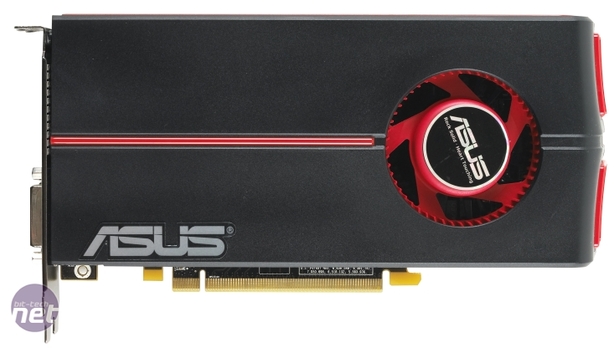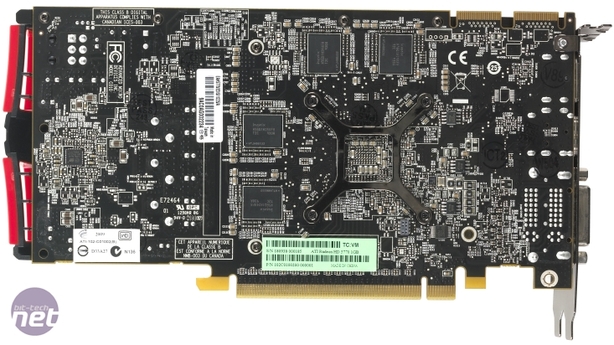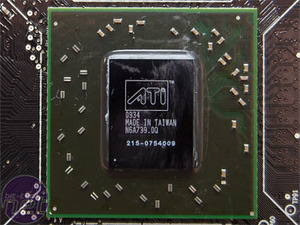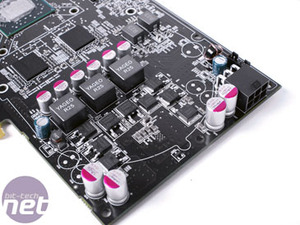Asus Radeon HD 5770
Manufacturer: AsusWe received several boards ahead of the launch and we'll be reviewing them all in due course - here's one such Radeon HD 5770 card from Asus.
The first thing to note, apart from its familiar Batmobile appearance is that' it's noticeably smaller than the Radeon HD 5800 cards at just 21.5cm (8.5in) including the curved front edge of the heatsink shroud. If you remove the cooler and opt for a third party solution, the board's length is reduced to just less than 21cm (approx. 8.25in).
Of course, length is less of a problem on a card such as the 5770 because it's shorter than the width of a typical ATX motherboard (30.5cm by 24.4cm). The vents on the end again do nothing but help give the card that "I'm here to save the world" feeling normally associated with superheroes - they also hide the board's lone 6-pin PCIe power connector.
What's more, judging from AMD's Radeon HD 5770 marketing material, it is certainly playing on this - the firm claims that "performance has never been so green" with a maximum board power of 108W and an impressive 18W idle power consumption. Regardless of what the marketing says, that's a full 9W lower than the already impressive idle power consumption improvements shown by the Radeon HD 5870 and 5850. That makes it a pretty attractive card for a home theatre PC.
The fan is the same 70mm radial design included on the 5800 series cards and it's not overly loud - the pitch doesn't change drastically between idle and load. The exhaust is also a familiar design, with most of the air exhausted out the rear of the case and a portion of it (approximately a third) exhausted back into the chassis through vents on the top edge of the shroud.
There are eight Hynix H5GQ1H24AFA GDDR5 DRAM chips - four on each side of the PCB. They're not cooled on the back of the board but the four chips on the top are attached to a heatspreader. There's scope for a 512MB part using DRAMs with smaller capacities, but we're unlikely to see that on the 5770 - the 5750 is another matter though.
Power delivery is fairly robust for a card of this calibre - the memory and memory controller power circuits use Volterra's VT242WF PWMs, which were used to deliver power to the Radeon HD 5870's memory. These are programmable via software, but the same can't be said for the GPU's power circuit as it uses the three old push-pull MOSFETs with each of the three chokes.
The heatsink is mostly plastic, with a small copper base with small integrated heatpipe and tall aluminium fins. This can be unscrewed and as you can see it's pretty sizable, but barely stretches larger than the core area it's cooling. We expect some single slot solutions available from some partners who like to differentiate. Those boards will have dual display outputs rather than four to keep the cost down - Asus has opted for the four outputs on this early board though, which is understandable.

MSI MPG Velox 100R Chassis Review
October 14 2021 | 15:04













Want to comment? Please log in.